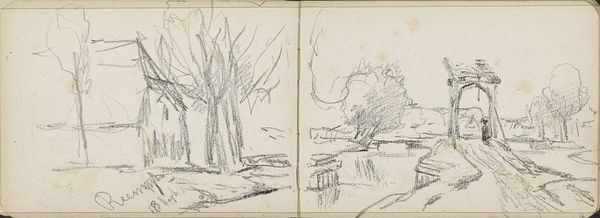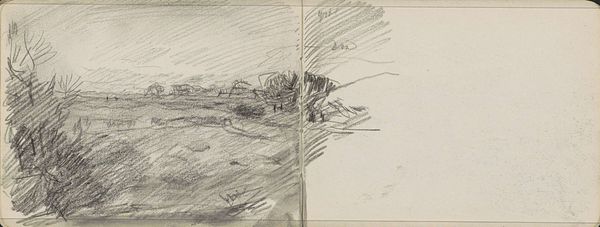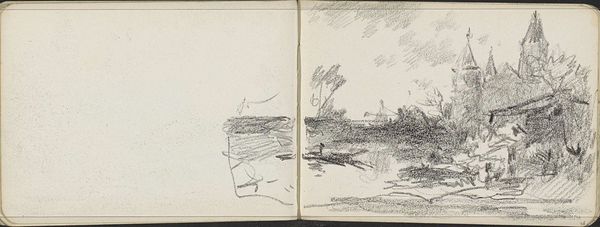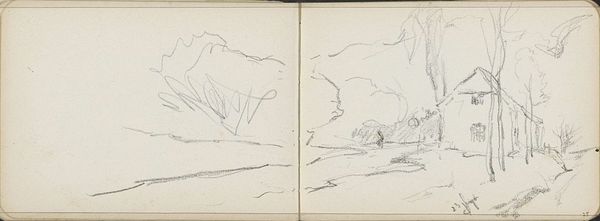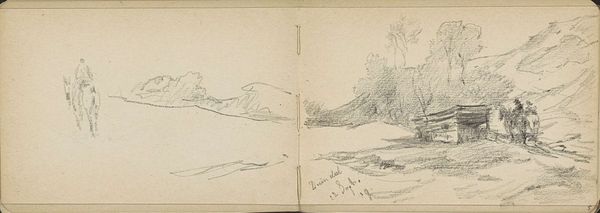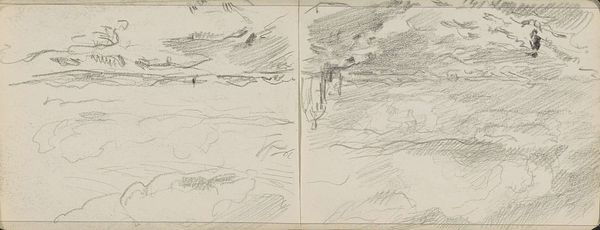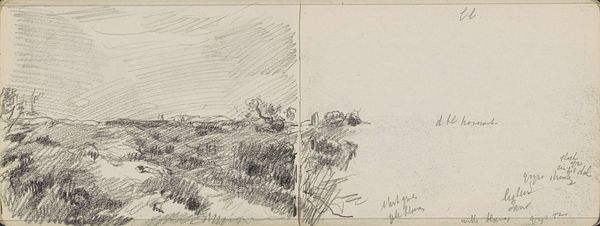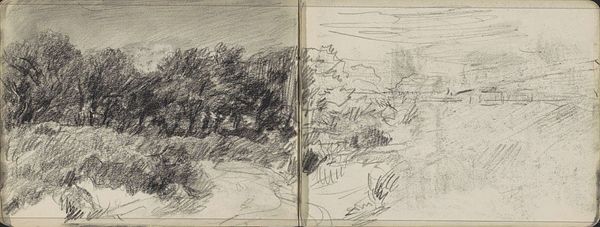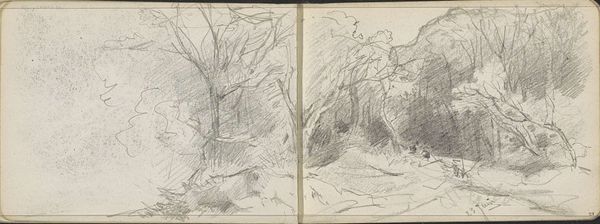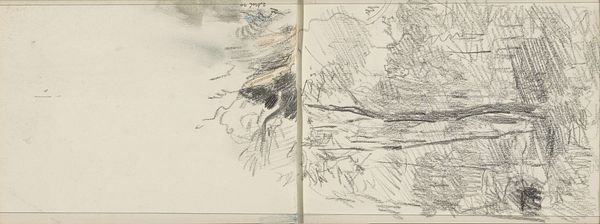
drawing, pencil
#
drawing
#
amateur sketch
#
light pencil work
#
pencil sketch
#
incomplete sketchy
#
landscape
#
personal sketchbook
#
sketchwork
#
sketch
#
pen-ink sketch
#
pencil
#
sketchbook drawing
#
sketchbook art
#
realism
#
initial sketch
Copyright: Rijks Museum: Open Domain
Curator: The work before us, "Duinlandschap met koeien en een ree," a dune landscape with cows and a deer, by Johan Antonie de Jonge, was made circa 1920 using pencil. It's quite a simple sketch. I am immediately struck by its seemingly unfinished quality. The composition is split across two pages of what appears to be a sketchbook, with one side more sparsely detailed than the other. What stands out to you? Editor: I notice how different the two pages are; the composition feels very unbalanced to me. What do you make of this visual choice? Curator: Indeed. Let us analyze the composition using principles of visual hierarchy. Observe how the right page is weighted down with darker pencil strokes, creating depth and form in the landscape, even though it's still minimal. Now consider the left page, predominantly empty, save for some rudimentary marks and illegible notes. This juxtaposition creates a visual tension. Is it an intentional contrast, or simply an abandoned idea? Note how the lack of completion allows for transparency regarding the artist's process; how materiality—the texture of the paper—plays into our perception of form. Editor: So you're suggesting the value lies in seeing the process, the 'making of', rather than the finished product? I'd not considered that. Curator: Precisely. What might semiotics suggest? What meaning can we extract from these minimal elements through an art historical lens, noting de Jonge’s contemporary, for instance, Cezanne, with his emphasis on the construction of form? Or perhaps his peers focusing on Dutch landscapes? We have the signifier—the marks on paper—and the signified—the suggestion of a landscape and animals. The connection is rather unstable. Does this not provoke a series of pertinent questions about artistic intention and completion? Editor: It certainly makes me look at the sketch differently, now. It is less about what is depicted and more about the how and why of its depiction, especially using this medium. Curator: Indeed, and such a close look at materiality and form offers an enriched experience and critical analysis.
Comments
No comments
Be the first to comment and join the conversation on the ultimate creative platform.
